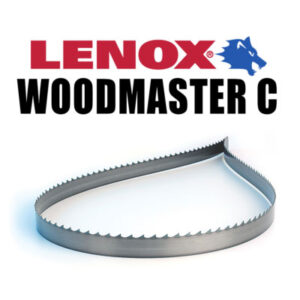Selecting the Right Band Saw Blade
Selecting the right band saw blade is as easy as answering a few questions
1.) What is the right blade length?
Most often the blade length varies according to the band saw machine type specifications from the manufacturer. Start by finding the correct blade length by checking your band saw machine user manual or by contacting the manufacturer. When contacting the manufacturer make sure you have the saw model number readily available.
2.) What is the right blade width?
When selecting a band saw blade width go with what is recommended by the machine manufacturer,
When choosing the band saw blade width, it is best to go with the widest width possible for any cut, according to your saw specifications. The only time width may vary is when you are trying to cut circles with your blade. See the chart on our width page to figure out the widths that correspond to specific cut radius.
3.) What is the right blade teeth per inch (tpi)?
Selecting the proper teeth per inch (tpi) for your blade, is based off of the cut type you are trying to achieve and the material you are cutting. To achieve a more smooth, refined cut, go with a blade that has more teeth per inch. If a blade with a higher TPI is being used on thinner material, make sure to reduce the feed rate throughout the blade. For thick materials use a low TPI blade, with a higher feed rate through the blade.
4.) What is the right tooth type?
When selecting the tooth type, there are a few tooth configurations for band saw blades, which include, regular, skip, hook, variable and variable positive. A blade with a regular tooth configuration is available in higher tpi blades and produces smoother cuts. When looking at a hook tooth blade, there is a wider space between the teeth. This blade also features a 10 degree rake angle. For aggressive, difficult to cut materials, go with a hook tooth blade. Another tooth configuration type with wider spaced teeth is the skip tooth blade. This blade type has a 0 degree rake angle. When a cut is slightly less aggressive, go with a skip tooth configuration. Learn more about tooth type here.
